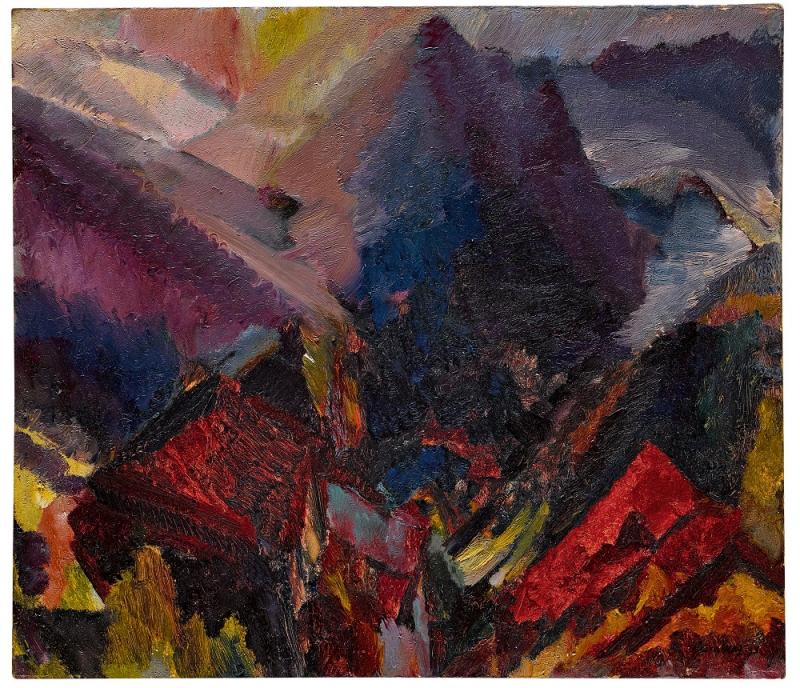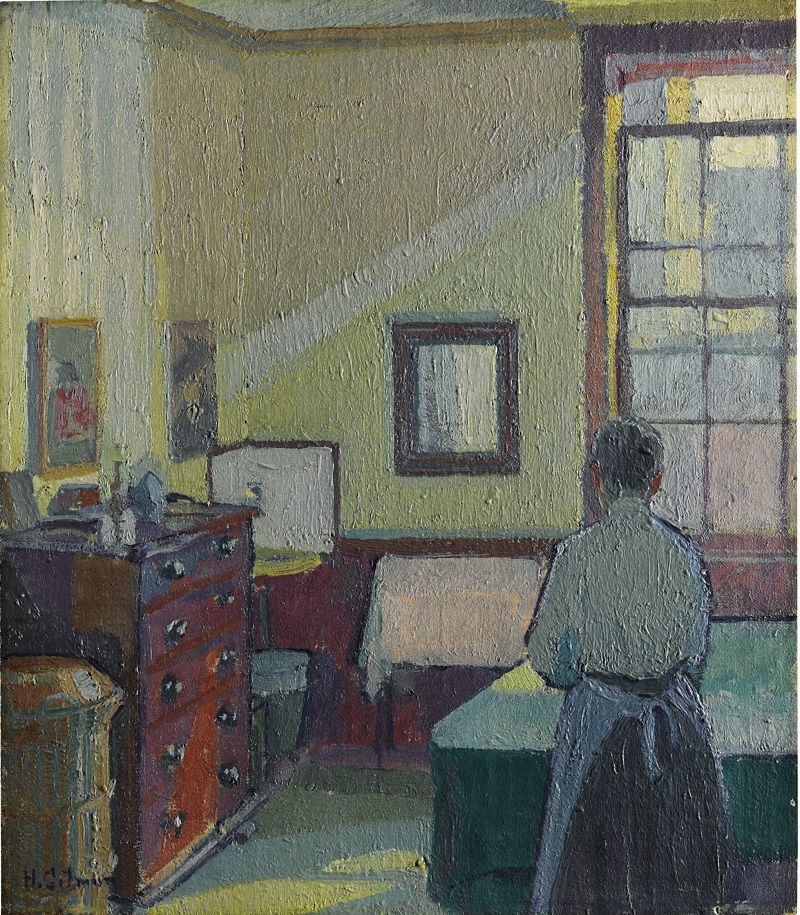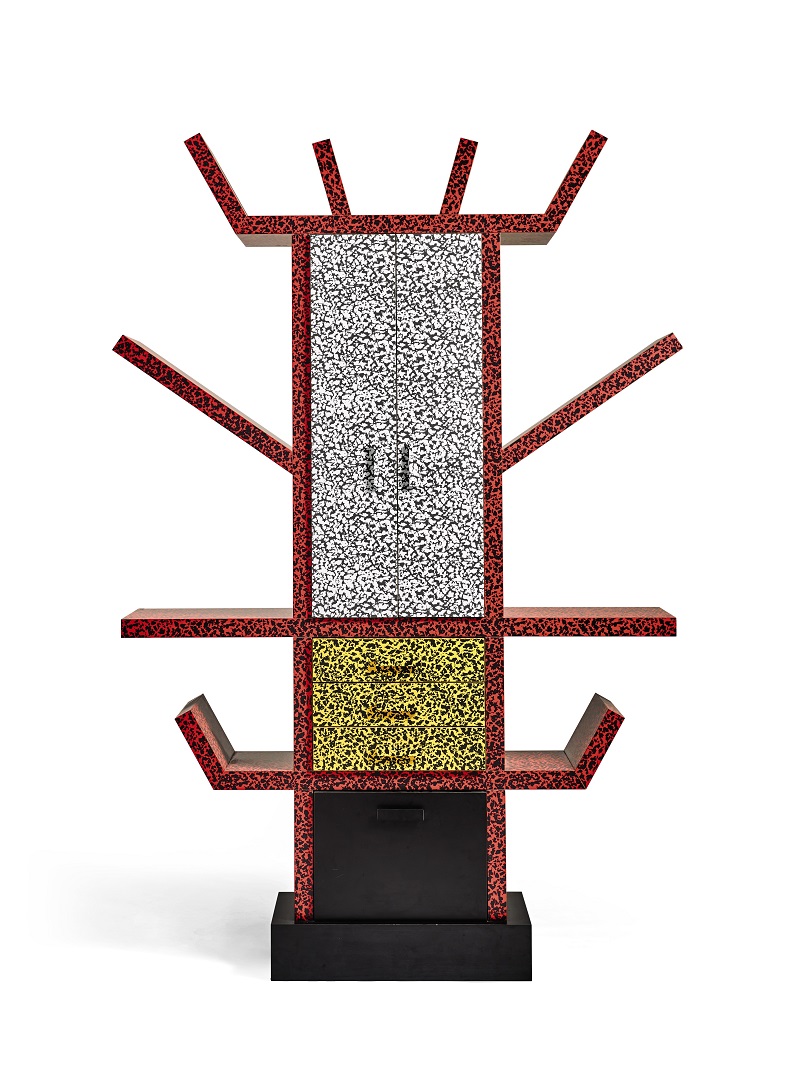Bowie/Collector, Sotheby's | reviews, news & interviews
Bowie/Collector, Sotheby's
Bowie/Collector, Sotheby's
From Tintoretto to Basquiat, a connoisseur's collection goes on show then on sale

David Bowie needs no introduction, yet he kept one aspect of his life largely hidden away: his art collecting. Now Sotheby’s, which is auctioning off around 400 items of his private art collection in a three-part sale on 10 and 11 November, is holding a very special exhibition, lasting just 10 days.
As you would expect from someone of Bowie’s range of burning intellectual interests, style, voracious curiosity, and sense of fun (as well as his keen engagement with art and the art world), the collection is wonderfully eclectic. There are "Aladdin Sane" splashy moments – two Damien Hirst "Spin Paintings" (one of which, Beautiful, hall, space-boy painting, Hirst and Bowie collaborated on) – but even these show Bowie’s fascination with process, as well as an ability to live in the here and now.
At the other end of the spectrum, we have the most surprising aspect of Bowie’s world: a moving slow-burn array of the murky-coloured, the unfashionable, and the overlooked – paintings, ceramics and small-scale sculpture of the British post-war period. Bowie cared passionately about his Britishness, looking back to the world he grew up in (from his childhood in Brixton) as well as to the no-frills art of his parents' generation (his mum and dad were from Yorkshire/Lancashire).
 In many of these understated works there is a deep valuing of place (Bowie, for instance, collected the St Ives School) and a celebration of the ordinary yet quietly radical. From Bernard Leach’s ceramics and Winifred Nicholson’s luminous St Ives Harbour, to Leon Kossoff’s Dalston Junction, 1973 (pictured above) and John Bellany’s Fisherman in the Snow (Port Seton, Scotland), the works reminded me of Grayson Perry’s title for the show he curated some years ago from the Arts Council Collection: Unpopular Culture.
In many of these understated works there is a deep valuing of place (Bowie, for instance, collected the St Ives School) and a celebration of the ordinary yet quietly radical. From Bernard Leach’s ceramics and Winifred Nicholson’s luminous St Ives Harbour, to Leon Kossoff’s Dalston Junction, 1973 (pictured above) and John Bellany’s Fisherman in the Snow (Port Seton, Scotland), the works reminded me of Grayson Perry’s title for the show he curated some years ago from the Arts Council Collection: Unpopular Culture.
 There is a lovely 1917 Harold Gilman, in which faded French colours (like those of Vuillard) are combined with the suburban working-class subject of an English charlady – Interior (Mrs Mounter) (pictured right). Even Bowie’s collection of German Expressionists, a passion developed during his bohemian years in West Berlin (1976-8), shows him avoiding the obvious: his focus here is predominantly on the woodcuts of Erich Heckel. He was apparently keen that his taste shouldn’t be identified with the more popular and elegant works of Egon Schiele, preferring Heckel’s more deliberate primitivism.
There is a lovely 1917 Harold Gilman, in which faded French colours (like those of Vuillard) are combined with the suburban working-class subject of an English charlady – Interior (Mrs Mounter) (pictured right). Even Bowie’s collection of German Expressionists, a passion developed during his bohemian years in West Berlin (1976-8), shows him avoiding the obvious: his focus here is predominantly on the woodcuts of Erich Heckel. He was apparently keen that his taste shouldn’t be identified with the more popular and elegant works of Egon Schiele, preferring Heckel’s more deliberate primitivism.
Not surprisingly, Bowie also looked to work that was "new" and surprising – pieces that embody adventurousness, playfulness, or are revolutionary in their approach and directness of expression. His inquisitive mind embraced contemporary South African art and "Outsider" artists from the Gugging Institute in Vienna, as well as well-known pioneers of Surrealism (Duchamp, Picabia) and the wacky designs of the Memphis Milano collective. A large portion of the collection (and a separate sale) is devoted to the latter, led by Ettore Sottsass – vibrant pieces that were snapped up by collectors in the early 1980s, but which Bowie started to buy when they were becoming less modish. His love of these irreverent furnishings, everyday objects, glass, and ceramics – which he lived with and used – was inspired by his first purchase of a red Olivetti typewriter, which led naturally to an exploration of the designer. For Bowie, "Sottsass had energy to burn. He gathered around him a team of very young kids … and blood began to boil" (V Magazine, 2002). It is tempting to relate this Memphis chic with the Bowie of the Let’s Dance era. (Pictured below: Sottsass Carlton Room Divider, designed 1981).
 Other stars of the collection include some very fine pictures by David Bomberg (main image) and Peter Lanyon, both of whom Bowie collected in depth. The most expensive item is a vibrant Jean-Michel Basquiat: Air Power – estimate £2.5 to £3.5 million. Bowie played Warhol in Julian Schnabel’s 1996 biopic Basquiat a year after he purchased the work: for him, Air Power related to rock "in ways that very few other visual artists get near". But there are also more affordable pieces, ranging from a small Bernard Leach tile to a funky Andrea Branzi Gritti bookshelf. Sometimes there is a nod to a particular style and era – for instance a Tintoretto of St Catherine and an Angel – but for the most part you feel that the choices have been made by a keen intelligence, and are both knowledgeable and emotive. Bowie pored over sales catalogues, read and researched, whittled down, regarding himself as a temporary custodian of the art that he amassed. "Art was, seriously, the only thing I’d ever wanted to own," he told the New York Times in 1998. "It has always been for me a stable nourishment. I use it. It can change the way I feel in the mornings."
Other stars of the collection include some very fine pictures by David Bomberg (main image) and Peter Lanyon, both of whom Bowie collected in depth. The most expensive item is a vibrant Jean-Michel Basquiat: Air Power – estimate £2.5 to £3.5 million. Bowie played Warhol in Julian Schnabel’s 1996 biopic Basquiat a year after he purchased the work: for him, Air Power related to rock "in ways that very few other visual artists get near". But there are also more affordable pieces, ranging from a small Bernard Leach tile to a funky Andrea Branzi Gritti bookshelf. Sometimes there is a nod to a particular style and era – for instance a Tintoretto of St Catherine and an Angel – but for the most part you feel that the choices have been made by a keen intelligence, and are both knowledgeable and emotive. Bowie pored over sales catalogues, read and researched, whittled down, regarding himself as a temporary custodian of the art that he amassed. "Art was, seriously, the only thing I’d ever wanted to own," he told the New York Times in 1998. "It has always been for me a stable nourishment. I use it. It can change the way I feel in the mornings."
Anticipating the huge demand to see the collection, Sotheby’s have turned the sale and exhibition into a mini-festival, with their first 24-hour all-nighter (4 November) kicking off the celebrations (including a showing of the Basquiat film). If you can’t get a ticket, try admission after midnight – there is the promise of a bacon butty and a fascinating chance to see not only the big-ticket items but also some of the more reticent masterpieces of modern and post-war British art that one suspects gave Bowie his rootedness.
rating
Explore topics
Share this article
The future of Arts Journalism
You can stop theartsdesk.com closing!
We urgently need financing to survive. Our fundraising drive has thus far raised £49,000 but we need to reach £100,000 or we will be forced to close. Please contribute here: https://gofund.me/c3f6033d
And if you can forward this information to anyone who might assist, we’d be grateful.

Subscribe to theartsdesk.com
Thank you for continuing to read our work on theartsdesk.com. For unlimited access to every article in its entirety, including our archive of more than 15,000 pieces, we're asking for £5 per month or £40 per year. We feel it's a very good deal, and hope you do too.
To take a subscription now simply click here.
And if you're looking for that extra gift for a friend or family member, why not treat them to a theartsdesk.com gift subscription?
more Visual arts
 'We are bowled over!' Thank you for your messages of love and support
Much-appreciated words of commendation from readers and the cultural community
'We are bowled over!' Thank you for your messages of love and support
Much-appreciated words of commendation from readers and the cultural community
 Photo Oxford 2025 review - photography all over the town
At last, a UK festival that takes photography seriously
Photo Oxford 2025 review - photography all over the town
At last, a UK festival that takes photography seriously
![SEX MONEY RACE RELIGION [2016] by Gilbert and George. Installation shot of Gilbert & George 21ST CENTURY PICTURES Hayward Gallery](https://theartsdesk.com/sites/default/files/styles/thumbnail/public/mastimages/Gilbert%20%26%20George_%2021ST%20CENTURY%20PICTURES.%20SEX%20MONEY%20RACE%20RELIGION%20%5B2016%5D.%20Photo_%20Mark%20Blower.%20Courtesy%20of%20the%20Gilbert%20%26%20George%20and%20the%20Hayward%20Gallery._0.jpg?itok=7tVsLyR-) Gilbert & George, 21st Century Pictures, Hayward Gallery review - brash, bright and not so beautiful
The couple's coloured photomontages shout louder than ever, causing sensory overload
Gilbert & George, 21st Century Pictures, Hayward Gallery review - brash, bright and not so beautiful
The couple's coloured photomontages shout louder than ever, causing sensory overload
 Lee Miller, Tate Britain review - an extraordinary career that remains an enigma
Fashion photographer, artist or war reporter; will the real Lee Miller please step forward?
Lee Miller, Tate Britain review - an extraordinary career that remains an enigma
Fashion photographer, artist or war reporter; will the real Lee Miller please step forward?
 Kerry James Marshall: The Histories, Royal Academy review - a triumphant celebration of blackness
Room after room of glorious paintings
Kerry James Marshall: The Histories, Royal Academy review - a triumphant celebration of blackness
Room after room of glorious paintings
 Folkestone Triennial 2025 - landscape, seascape, art lovers' escape
Locally rooted festival brings home many but not all global concerns
Folkestone Triennial 2025 - landscape, seascape, art lovers' escape
Locally rooted festival brings home many but not all global concerns
 Sir Brian Clarke (1953-2025) - a personal tribute
Remembering an artist with a gift for the transcendent
Sir Brian Clarke (1953-2025) - a personal tribute
Remembering an artist with a gift for the transcendent
 Emily Kam Kngwarray, Tate Modern review - glimpses of another world
Pictures that are an affirmation of belonging
Emily Kam Kngwarray, Tate Modern review - glimpses of another world
Pictures that are an affirmation of belonging
 Kiefer / Van Gogh, Royal Academy review - a pairing of opposites
Small scale intensity meets large scale melodrama
Kiefer / Van Gogh, Royal Academy review - a pairing of opposites
Small scale intensity meets large scale melodrama
 Jenny Saville: The Anatomy of Painting, National Portrait Gallery review - a protégé losing her way
A brilliant painter in search of a worthwhile subject
Jenny Saville: The Anatomy of Painting, National Portrait Gallery review - a protégé losing her way
A brilliant painter in search of a worthwhile subject
 Abstract Erotic, Courtauld Gallery review - sculpture that is sensuous, funny and subversive
Testing the boundaries of good taste, and winning
Abstract Erotic, Courtauld Gallery review - sculpture that is sensuous, funny and subversive
Testing the boundaries of good taste, and winning
 Edward Burra, Tate Britain review - watercolour made mainstream
Social satire with a nasty bite
Edward Burra, Tate Britain review - watercolour made mainstream
Social satire with a nasty bite

Add comment